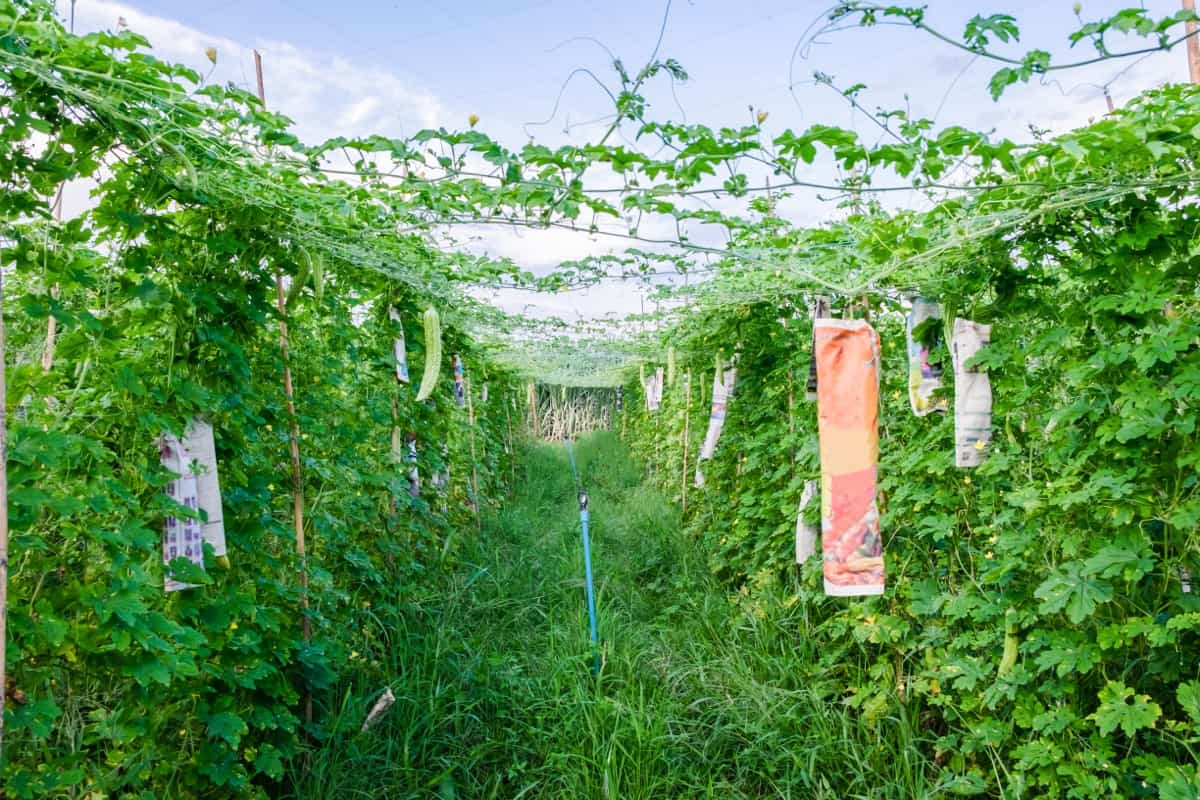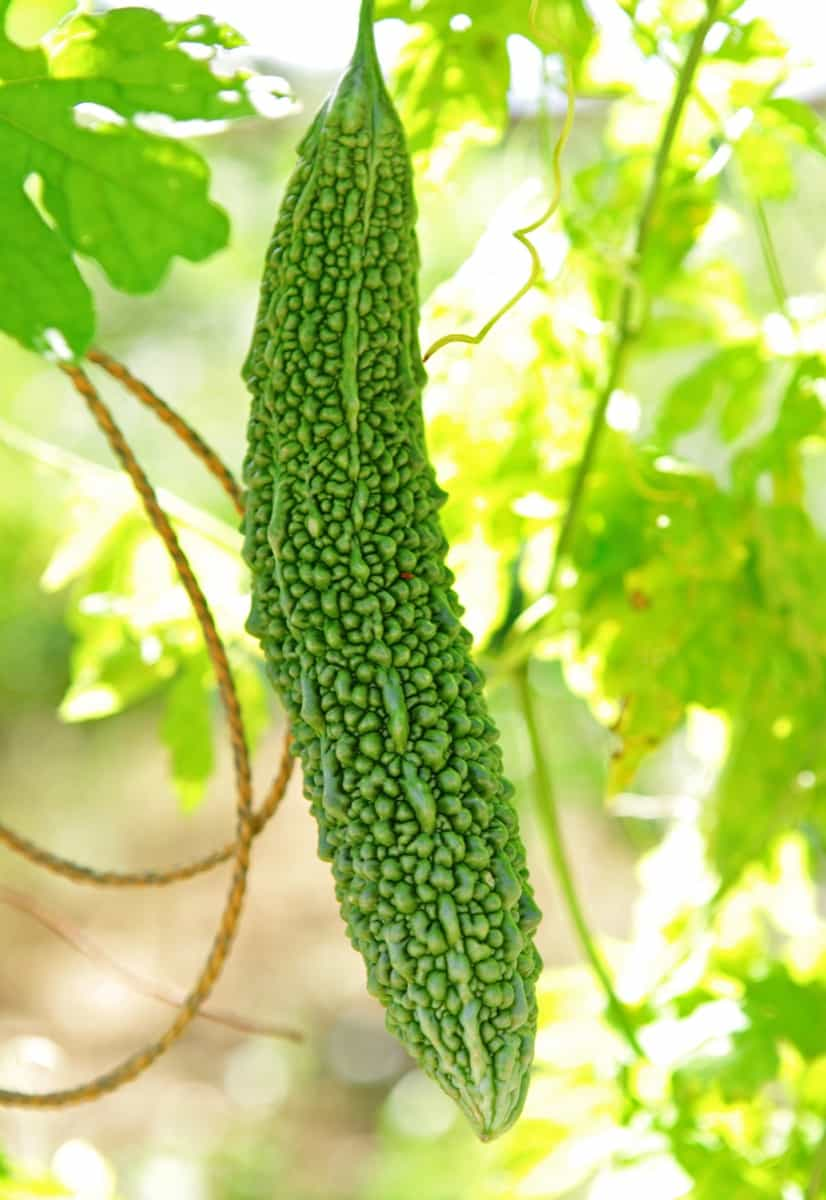While Bitter Melon plants can be a rewarding addition to your garden, they come with their fair share of problems. From pests and diseases to environmental factors and cultural practices, various issues can affect the health and productivity of these plants. However, by being aware of the common problems and armed with the right treatments and solutions, you can effectively address these issues and ensure the success of your Bitter Melon plants. Regular monitoring, proper watering techniques, timely fertilization, adequate sunlight exposure, and careful pest management are all key aspects to consider.

Problems with Bitter Melon/Bitter Gourd Plants
Preventing Bitter Melon Vine Decline: Causes and Solutions
One common cause of vine decline in Bitter Melon plants is overwatering. These plants prefer well-drained soil; excessive moisture can cause root rot and other fungal diseases. Add organic matter such as compost or vermiculite to prevent this to ensure the soil is adequately draining. Another potential culprit for vine decline is nutrient deficiency.
Bitter Melon plants require a balanced blend of nutrients to thrive, so it’s important to provide them with proper fertilization. Environmental factors such as extreme temperatures or poor air circulation can contribute to vine decline. Ensure your Bitter Melon plants are located in an area with adequate sunlight, good air circulation, and protection from harsh weather conditions whenever possible.
Dealing With Fungal Diseases in Bitter Melon Plants
Dealing with fungal diseases in Bitter Melon plants can be challenging for any gardener. These diseases are caused by various fungi that thrive in warm and humid conditions, which are ideal for growing Bitter Melons. It is important to maintain good airflow around the plants. This can be achieved by spacing them appropriately and pruning any overcrowded areas.
Adequate air circulation helps prevent the buildup of moisture on the leaves, which creates an environment conducive to fungal growth. Regular inspection is key in identifying early signs of fungal infections. Look for discolored or wilting leaves, lesions or spots on foliage and powdery or fuzzy growth on plant surfaces. If you notice these symptoms, act promptly to mitigate further spread.
Regarding treatment options for fungal diseases in Bitter Melon plants, organic fungicides can be effective tools. Look for products specifically designed for edible crops and follow the instructions when applying them. In addition to using fungicides, cultural practices such as removing infected plant parts and implementing crop rotation strategies can also help manage fungal diseases over time.
Managing Nutrient Deficiencies in Bitter Melon Plants
If you’re growing Bitter Melon plants and notice that they are not thriving as expected, it could be due to nutrient deficiencies. One common nutrient deficiency in Bitter Melon plants is nitrogen deficiency. Nitrogen is crucial for leaf and stem growth, so if your plant’s leaves appear pale or yellowish-green, it may indicate a lack of nitrogen. To remedy this issue, consider adding organic matter or applying a balanced fertilizer with higher nitrogen content.
Another nutrient deficiency to watch out for is phosphorus deficiency. Phosphorus is important for root development and flowering. If your Bitter Melon plant has weak roots or fails to produce flowers, it might lack phosphorus. Be sure to amend the soil with bone meal or rock phosphate to provide an adequate phosphorus supply. Potassium deficiency can also impact Bitter Melon plants’ health and productivity.
Potassium helps regulate water uptake and improve overall plant vigor. Signs of potassium deficiency include weak stems and yellowing leaves with brown spots along the edges. Applying potassium-rich fertilizers such as wood ash can help address this issue. Furthermore, micronutrient deficiencies like iron, manganese, zinc, and magnesium can also affect Bitter Melon plants’ growth.
These deficiencies often manifest through chlorosis (yellowing) between leaf veins or stunted growth patterns in specific plant areas. To effectively manage these micronutrient deficiencies, consider using chelated fertilizers specifically formulated for each element or foliar sprays containing trace minerals. Remember that proper nutrition is key to maximizing your harvest from Bitter Melon plants – ensuring they receive all necessary nutrients will lead to healthier vines and better fruit production.
Preventing Bitter Melon Fruit Rot in the Garden
Bitter Melon is a unique and nutritious vegetable with a distinctive flavor to various dishes. However, fruit rot is a common problem gardeners face when growing Bitter Melon. This can be disheartening after putting so much effort into caring for your plants. You can take several key steps to prevent Bitter Melon fruit rot in your garden. Make sure to provide adequate spacing between plants to improve air circulation. This will help reduce humidity levels around the fruits and minimize the risk of fungal infections.
In case you missed it: 10 Best Bitter Gourd Varieties for High Production/Yield

Avoid overwatering your Bitter Melon plants, as excess moisture can create an ideal environment for rot-causing pathogens. Instead, water deeply but infrequently, allowing the soil to dry out slightly between watering sessions. Furthermore, it’s crucial to harvest ripe fruits promptly and immediately remove any damaged or infected ones from the plant. Doing this regularly prevents disease spread and keeps your remaining fruits healthy. Consider applying an organic fungicide or natural remedies like neem oil to protect against fungal infections on your Bitter Melon plants.
Identifying and Treating Bitter Melon Leaf Curling
Leaf curling in Bitter Melon plants can occur due to various factors, including pests, diseases, or environmental stressors. One possible culprit is aphids. These insects feed on the sap of leaves and cause them to deform and curl. Another potential cause is mites which thrive in hot and dry conditions, often leading to leaf curling.
You can use organic insecticidal soaps or neem oil sprays to combat these pesky pests naturally. These products are safe for plants and beneficial insects while controlling aphids and mites. However, leaf curling may indicate fungal diseases like powdery or downy mildew. These diseases thrive in humid conditions and can cause leaves to twist and distort.
To tackle fungal infections, remove infected plant parts carefully and apply organic fungicides according to package instructions. In some cases, leaf curling may result from environmental stressors like excessive heat or inadequate watering. Ensure that your Bitter Melon plants receive sufficient water without becoming waterlogged. Consider providing shade during scorching summer days if necessary. Remember that prevention is always better than cure for Bitter Melon leaf curling.
Overcoming Stunted Growth in Bitter Melon Plants
Stunted growth can be a frustrating problem for any gardener, especially for Bitter Melon plants. These vines have the potential to grow quite vigorously, but sometimes they hit a roadblock and seem to stop growing altogether. One common cause of stunted growth in Bitter Melon plants is insufficient sunlight. These tropical vines thrive in full sun, so their growth will suffer if they do not get at least 6-8 hours of direct sunlight daily.
Another factor that can contribute to stunted growth is poor soil quality. Bitter Melons prefer well-draining soil with plenty of organic matter. Overwatering or underwatering can also stunt the growth of Bitter Melon plants. These vines like consistent moisture but don’t tolerate waterlogged conditions. Ensure you water them appropriately based on their needs and the prevailing weather conditions. Furthermore, nutrient deficiencies can hinder plant growth as well.
Bitter Melons require adequate nitrogen, phosphorus, potassium, and micronutrients for optimal development. Regularly fertilizing them with a balanced fertilizer formulated specifically for vegetables can help address any nutrient deficiencies. Pests such as aphids or mites could also cause stunted growth by feeding on Bitter Melon plants’ tender leaves and shoots. Consider using natural pest control methods like insecticidal soap or neem oil spray to keep these pests at bay without harming beneficial insects.
Managing Bitter Melon Plant Wilting and Drooping Leaves
Check the moisture levels of the soil. Bitter Melon plants require consistent moisture but not excessive waterlogging. Extreme heat can also cause wilting and drooping leaves. Pests such as aphids or mites can also lead to leaf wilting. Inspect plants carefully for any signs of pest infestation.
In case you missed it: How to Grow Bitter Melon/Gourd in Greenhouse: A Step-by-Step Guide for Seed to Harvest

If detected early enough, you can manually remove these pests or use organic insecticides like neem oil to control their population. Fungal infections like powdery mildew or root rot may contribute to leaf wilting. Ensure proper air circulation around your plants by pruning any crowded branches or foliage to prevent these diseases. Also, avoid overwatering as it creates favorable conditions for fungal growth.
Conclusion
Growing Bitter Melon plants can be a rewarding experience, but it does come with its fair share of challenges. Several problems can arise when cultivating these unique vegetables, from vine decline to pests and diseases. However, by implementing the right preventive measures and taking quick action when issues arise, you can overcome these obstacles and enjoy a thriving Bitter Melon Garden.
- Feed Your Flock for Less: Top 10 Tips to Save on Chicken Feed
- Ultimate Guide to Ossabaw Island Hog: Breeding, Raising, Diet, and Care
- Hatching Answers: The Top 10 Reasons Your Chickens Aren’t Laying Eggs
- Eggs and Economics: Breaking Down the Cost of Raising Backyard Chickens
- Defend Your Greens: Proven Methods to Keep Iguanas Out of Your Garden
- Ultimate Guide to Cinnamon Queen Chicken: A Comprehensive Guide for Beginners
- Ultimate Guide to California Tan Chicken: Breeding, Raising, Diet, Egg-Production and Care
- Ultimate Guide to Marsh Daisy Chicken: Breeding, Raising, Diet, and Care
- 10 Types of Chicken Farming Businesses You Can Start for Profits